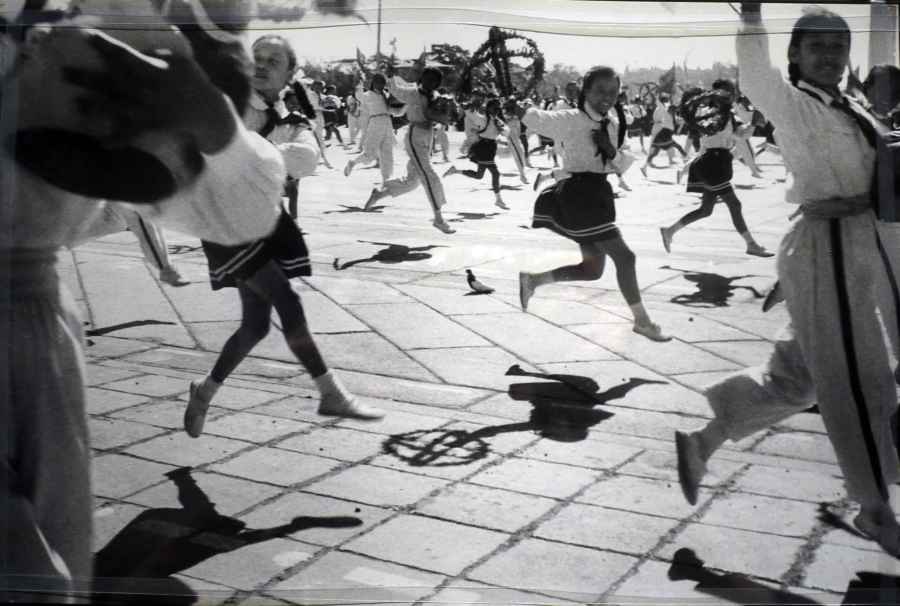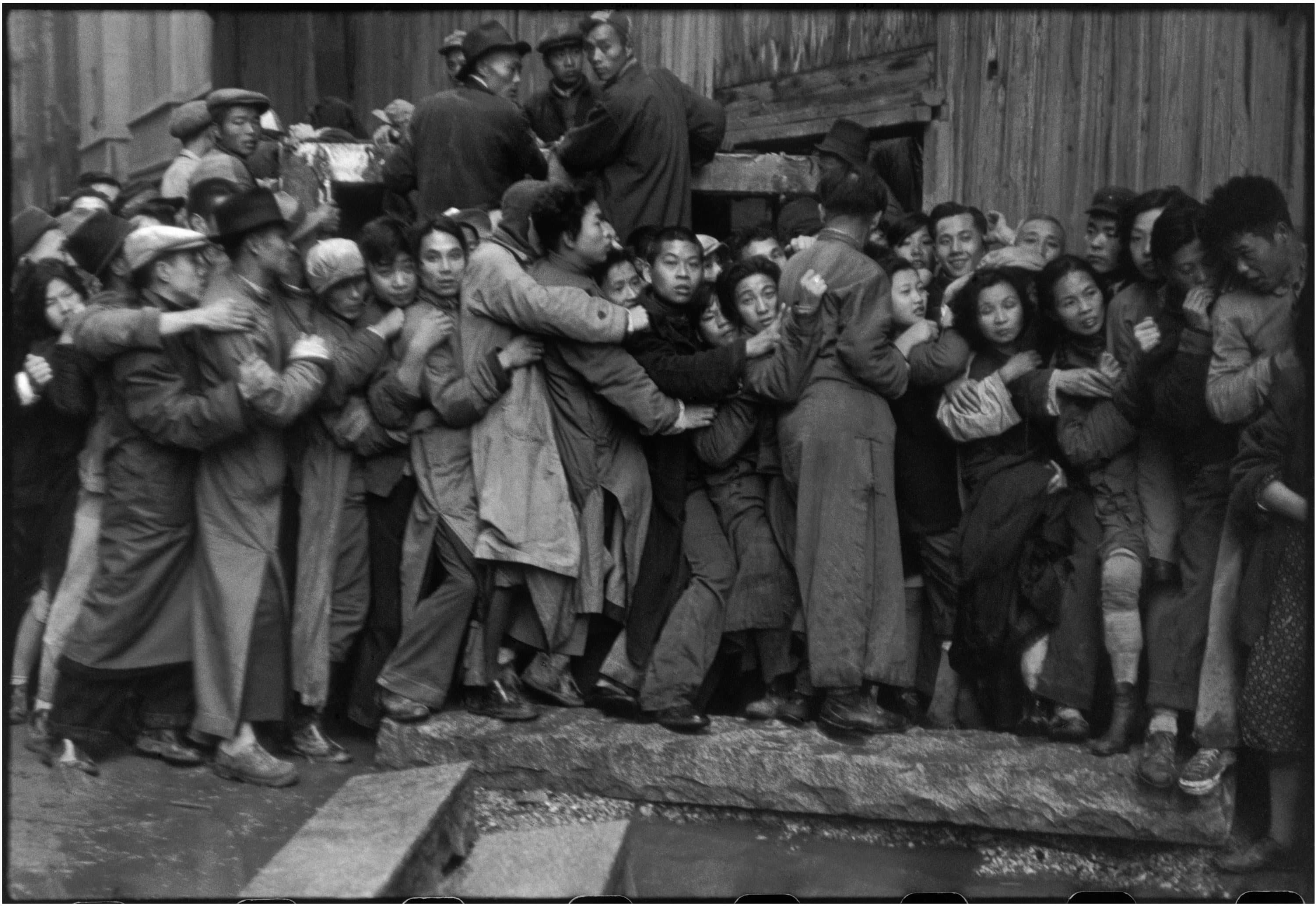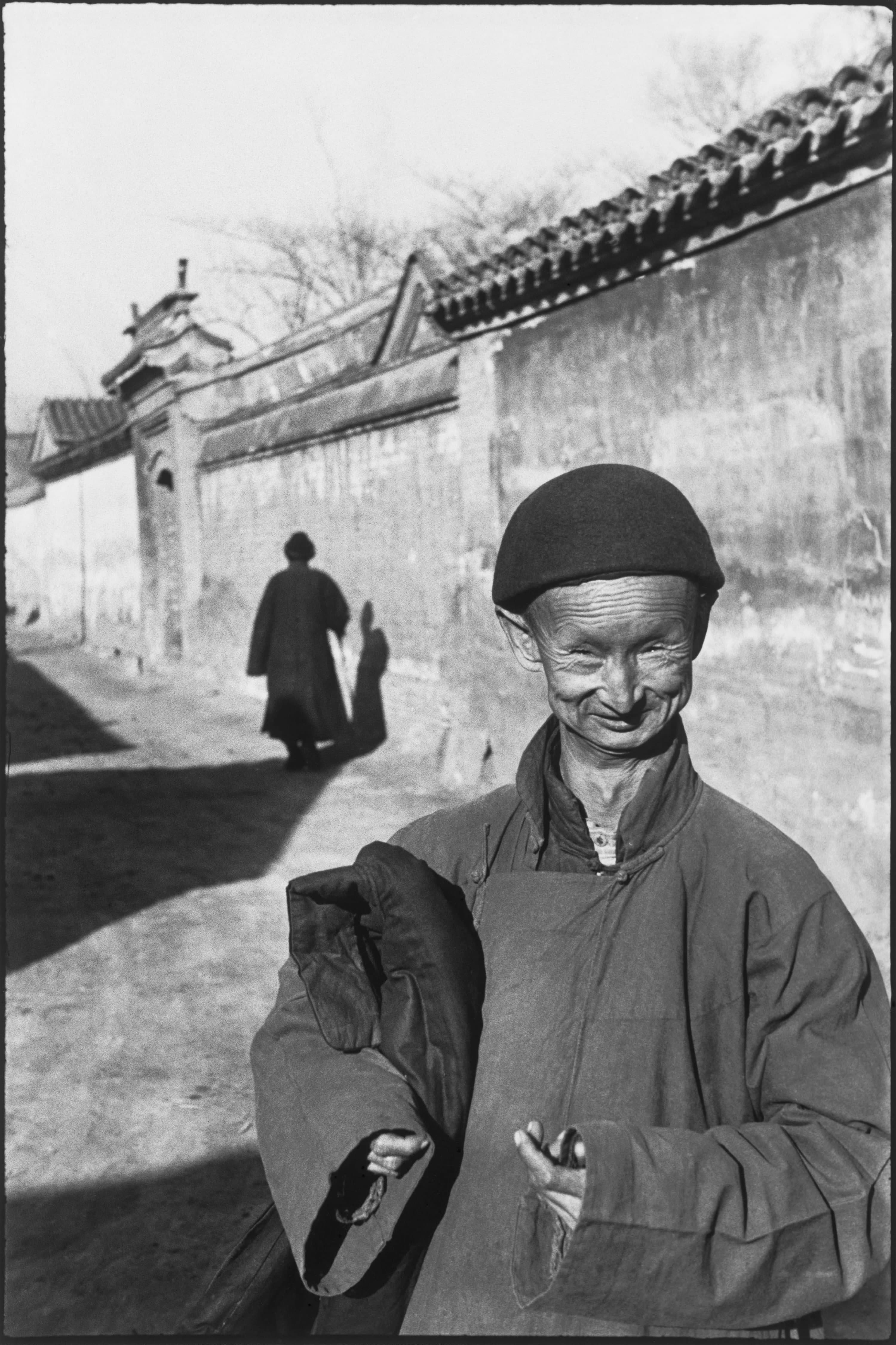 |
| Celebrations for the ninth anniversary of the People’s Republic, Beijing, 1 October 1958 |
Henri Cartier-Bresson, China 1948-1949, 1958 | Book
China in particular proved a rich hunting ground for HCB as he hit his prime as a photographer during some of the most tumultuous events in the Middle Kingdom’s history, including the civil war and Communist victory. Like many left-leaning European intellectuals of his era, he was drawn to the great Maoist experiment to transform this massive, almost unfathomably historic nation. But disillusionment eventually set in as it became clear how much the population was suffering under Mao’s grandiose schemes.

Gold Rush. The last days of Kuomintang, Shanghai, 1948

A local who escorts brides in a sedan chair, Beijing, 1948
Moving into the 1950s we get more shots of happy factory workers and young pioneers, which seem naively optimistic knowing what we now know about the subsequent mayhem of the Cultural Revolution, but again, you can’t fault HCB’s photographic technique and compositional genius. Accompanying the images is a highly authoritative text, co-authored by Taiwanese curator Ying Lung-su to give a wider cultural perspective. This book is required reading for fans of HCB or anyone interested in the history of China – now a global superpower for better or worse.
AMATEUR PHOTOGRAPHER

No comments:
Post a Comment